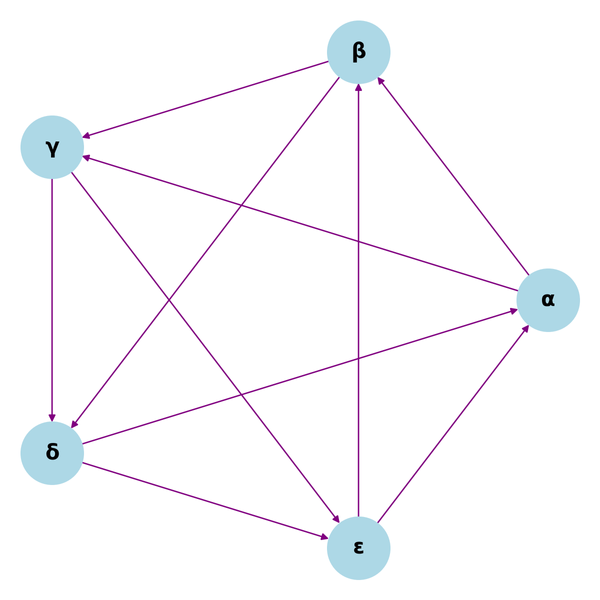Building Nanograd: A Deep Dive into Automatic Differentiation

From First Principles to a Minimal Autograd Engine
1. Introduction & Motivation
Nanograd is a minimal automatic differentiation (autograd) engine that computes gradients for scalar-valued functions. Popularized by Andrej Karpathy, it demonstrates the core mechanics behind frameworks like PyTorch and TensorFlow. This guide constructs Nanograd from scratch, explaining:
- Automatic Differentiation (AD): How gradients are computed via backpropagation.
- Computational Graphs: Representing mathematical operations as directed acyclic graphs (DAGs).
- Dynamic Graph Construction: Tracking operations during forward passes.
2. Foundations of Automatic Differentiation
2.1 What is a Gradient?
For a function \( f: \mathbb{R}^n \rightarrow \mathbb{R} \), the gradient \( \nabla f \) is:
\[ \nabla f = \left[ \frac{\partial f}{\partial x_1}, \frac{\partial f}{\partial x_2}, ..., \frac{\partial f}{\partial x_n} \right]^T \]
Gradients indicate the direction of steepest ascent in \( f \).
2.2 Forward vs. Reverse Mode AD
- Forward Mode: Computes directional derivatives by iterating from inputs to outputs.
- Complexity: \( O(n) \) per output.
- Reverse Mode (Backpropagation): Computes gradients by traversing from outputs to inputs.
- Complexity: \( O(m) \) per input (favored in deep learning).
2.3 Chain Rule in Backpropagation
For a composite function \( f(g(x)) \), the chain rule states:
\[ \frac{df}{dx} = \frac{df}{dg} \cdot \frac{dg}{dx} \]
Reverse-mode AD recursively applies this rule through the computational graph.
3. Core Components of Nanograd
3.1 The Value Class
A Value object wraps a scalar and tracks its computational history:
class Value:
def __init__(self, data, _children=(), _op=''):
self.data = data # Scalar value
self.grad = 0.0 # Gradient (initially 0)
self._backward = lambda: None # Backward function
self._prev = set(_children) # Child nodes
self._op = _op # Operation label (for debugging)3.2 Computational Graph Representation
Each Value object is a node in a DAG. For an expression \( a + b \), the graph is:
+
/ \\
a b3.3 Gradient Initialization
- All grad attributes are initialized to 0.
- The output node’s gradient is set to 1.0 before backpropagation (since \( \frac{df}{df} = 1 \)).
4. Mathematical Operations & Their Gradients
4.1 Addition
def __add__(self, other):
other = other if isinstance(other, Value) else Value(other)
out = Value(self.data + other.data, (self, other), '+')
def _backward():
self.grad += 1.0 * out.grad # ∂(a+b)/∂a = 1
other.grad += 1.0 * out.grad # ∂(a+b)/∂b = 1
out._backward = _backward
return outGradient Derivation:
\[ \frac{\partial (a + b)}{\partial a} = 1, \quad \frac{\partial (a + b)}{\partial b} = 1 \]
4.2 Multiplication
def __mul__(self, other):
other = other if isinstance(other, Value) else Value(other)
out = Value(self.data * other.data, (self, other), '*')
def _backward():
self.grad += other.data * out.grad # ∂(a*b)/∂a = b
other.grad += self.data * out.grad # ∂(a*b)/∂b = a
out._backward = _backward
return outGradient Derivation:
\[ \frac{\partial (a \cdot b)}{\partial a} = b, \quad \frac{\partial (a \cdot b)}{\partial b} = a \]
4.3 Activation Functions (Tanh)
def tanh(self):
x = self.data
t = (math.exp(2*x) - 1)/(math.exp(2*x) + 1)
out = Value(t, (self,), 'tanh')
def _backward():
self.grad += (1 - t**2) * out.grad # ∂tanh(x)/∂x = 1 - tanh²(x)
out._backward = _backward
return outGradient Derivation:
\[ \frac{\partial \tanh(x)}{\partial x} = 1 - \tanh^2(x) \]
5. Backpropagation Algorithm
5.1 Topological Sorting
To apply the chain rule correctly, nodes must be processed in reverse topological order:
- Forward Pass: Build the computational graph.
- Backward Pass:
- Initialize output gradient to 1.0.
- Sort nodes topologically (parents before children).
- Apply
_backward()in reverse order.
5.2 Implementing backward()
def backward(self):
topo = []
visited = set()
def build_topo(v):
if v not in visited:
visited.add(v)
for child in v._prev:
build_topo(child)
topo.append(v)
build_topo(self)
self.grad = 1.0
for v in reversed(topo):
v._backward()6. From Scratch Implementation
6.1 Full Value Class
import math
class Value:
def __init__(self, data, _children=(), _op=''):
self.data = data
self.grad = 0.0
self._backward = lambda: None
self._prev = set(_children)
self._op = _op
def __add__(self, other):
# ... (as defined in Section 4.1)
def __mul__(self, other):
# ... (as defined in Section 4.2)
def tanh(self):
# ... (as defined in Section 4.3)
def __repr__(self):
return f"Value(data={self.data}, grad={self.grad})"6.2 Testing the Engine
Example 1: Simple Expression
a = Value(2.0)
b = Value(3.0)
c = a * b + a.tanh()
c.backward()
print(a.grad) # ∂c/∂a = b + (1 - tanh²(a)) ≈ 3 + (1 - 0.964) ≈ 3.036Example 2: Neural Network Neuron
# Inputs
x1 = Value(0.5)
x2 = Value(-1.0)
w1 = Value(1.0)
w2 = Value(1.0)
b = Value(0.1)
# Forward pass
out = (x1 * w1 + x2 * w2 + b).tanh()
out.backward()
print(w1.grad) # ∂out/∂w1 = (1 - tanh²(z)) * x1 ≈ (0.75) * 0.5 = 0.3757. Advanced Topics
7.1 Efficiency Considerations
- Scalar Limitation: Nanograd handles scalars, but real frameworks use tensors for vectorization.
- Operator Overloading: PyTorch uses C++ extensions for speed; Python is ~100x slower.
7.2 Extending Nanograd
- More Operations: Add
exp,log, orReLU. - GPU Support: Implement tensor operations with CUDA.
- Gradient Checkpointing: Reduce memory usage by recomputing intermediates.
7.3 Comparison with PyTorch Autograd
8. Mathematical Proofs
8.1 Chain Rule for Composite Functions
For \( f(g(x)) \), the derivative is:
\[ \frac{df}{dx} = \frac{df}{dg} \cdot \frac{dg}{dx} \]
Proof:
By definition,
\[ \frac{df}{dx} = \lim_{h \to 0} \frac{f(g(x+h)) - f(g(x))}{h} \]
Multiply and divide by \( g(x+h) - g(x) \):
\[ \frac{df}{dx} = \lim_{h \to 0} \left[ \frac{f(g(x+h)) - f(g(x))}{g(x+h)-g(x)} \cdot \frac{g(x+h)-g(x)}{h} \right] = \frac{df}{dg} \cdot \frac{dg}{dx} \]
9. Applications
9.1 Training a Neural Network
# 2-layer neural network
class Neuron:
def __init__(self, n_inputs):
self.w = [Value(np.random.randn()) for _ in range(n_inputs)]
self.b = Value(np.random.randn())
def __call__(self, x):
act = sum((xi * wi for xi, wi in zip(x, self.w)), self.b)
return act.tanh()
# Loss function: Mean Squared Error (MSE)
def loss(y_pred, y_true):
return sum((yp - yt)**2 for yp, yt in zip(y_pred, y_true))9.2 Optimizers (SGD)
def sgd(params, lr=0.01):
for p in params:
p.data -= lr * p.grad
p.grad = 0.0 # Reset gradients10. Limitations & Future Work
10.1 Nanograd Limitations
- Scalar-Only: No support for tensors or batches.
- No GPU Acceleration: Pure Python implementation.
- Basic Ops: Limited to
+,*, andtanh.
10.2 Extensions
- Tensor Support: Add multi-dimensional arrays.
- Autograd for CNNs: Implement convolution and pooling.
- Just-In-Time (JIT) Compilation: Optimize with Numba or C++.
11. Conclusion
Nanograd demystifies automatic differentiation by implementing reverse-mode AD in ~100 lines of Python. While simplistic, it captures the essence of modern autograd systems. By extending it with tensor operations, GPU support, and more layers, you can build a production-ready deep learning framework.
References
- Karpathy, A. (2020). Micrograd: A tiny scalar-valued autograd engine.
- Baydin, A. G. et al. (2018). Automatic Differentiation in Machine Learning: A Survey.
- Paszke, A. et al. (2017). Automatic differentiation in PyTorch.
Appendices
- A1: Full Nanograd Code with Comments.
- A2: Derivation of Common Activation Gradients (ReLU, Sigmoid).
- A3: Benchmarking Nanograd vs. PyTorch.


